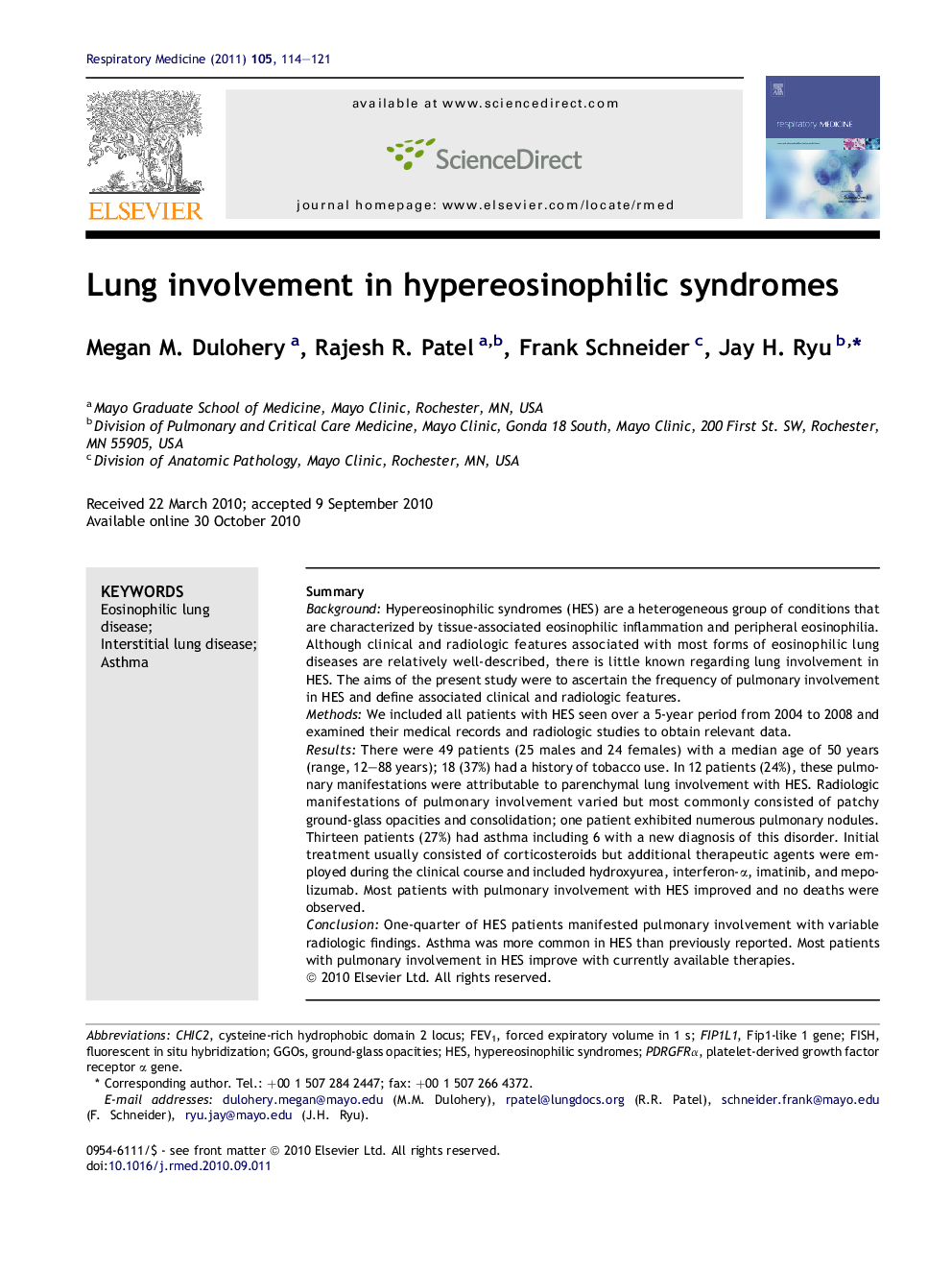| Article ID | Journal | Published Year | Pages | File Type |
|---|---|---|---|---|
| 4210442 | Respiratory Medicine | 2011 | 8 Pages |
SummaryBackgroundHypereosinophilic syndromes (HES) are a heterogeneous group of conditions that are characterized by tissue-associated eosinophilic inflammation and peripheral eosinophilia. Although clinical and radiologic features associated with most forms of eosinophilic lung diseases are relatively well-described, there is little known regarding lung involvement in HES. The aims of the present study were to ascertain the frequency of pulmonary involvement in HES and define associated clinical and radiologic features.MethodsWe included all patients with HES seen over a 5-year period from 2004 to 2008 and examined their medical records and radiologic studies to obtain relevant data.ResultsThere were 49 patients (25 males and 24 females) with a median age of 50 years (range, 12–88 years); 18 (37%) had a history of tobacco use. In 12 patients (24%), these pulmonary manifestations were attributable to parenchymal lung involvement with HES. Radiologic manifestations of pulmonary involvement varied but most commonly consisted of patchy ground-glass opacities and consolidation; one patient exhibited numerous pulmonary nodules. Thirteen patients (27%) had asthma including 6 with a new diagnosis of this disorder. Initial treatment usually consisted of corticosteroids but additional therapeutic agents were employed during the clinical course and included hydroxyurea, interferon-α, imatinib, and mepolizumab. Most patients with pulmonary involvement with HES improved and no deaths were observed.ConclusionOne-quarter of HES patients manifested pulmonary involvement with variable radiologic findings. Asthma was more common in HES than previously reported. Most patients with pulmonary involvement in HES improve with currently available therapies.
